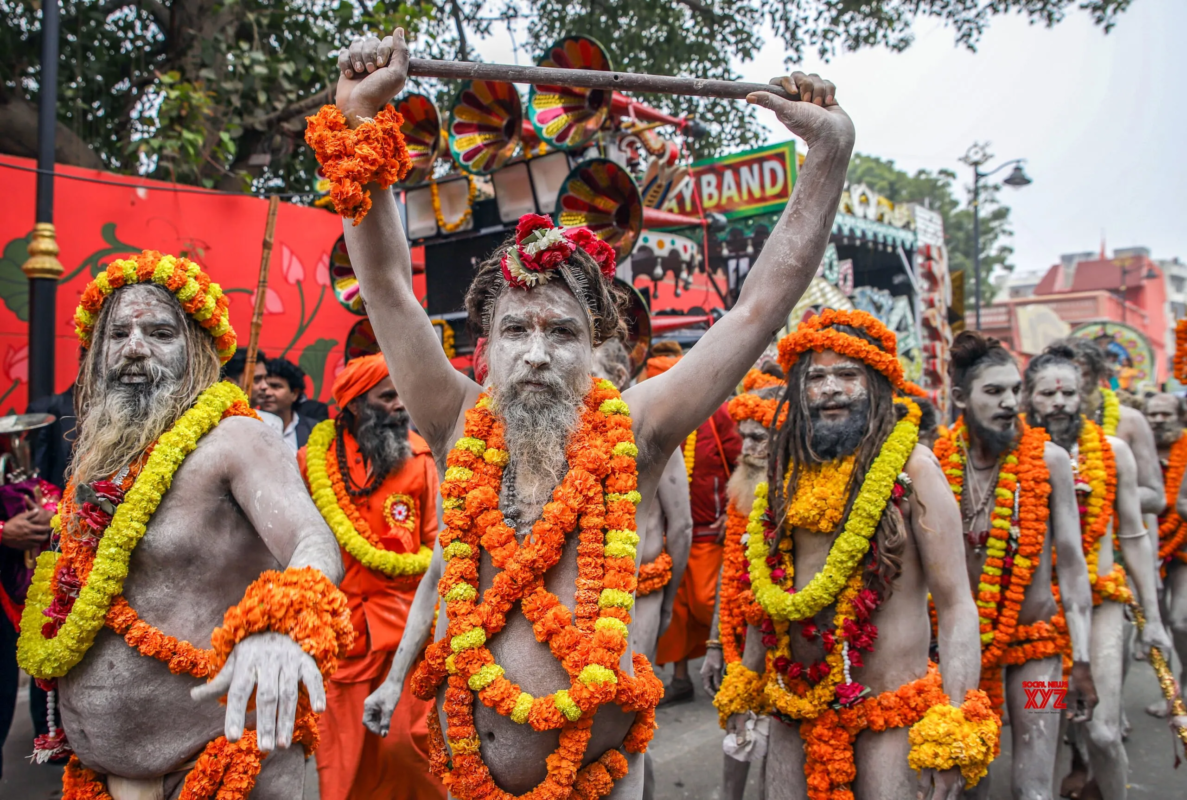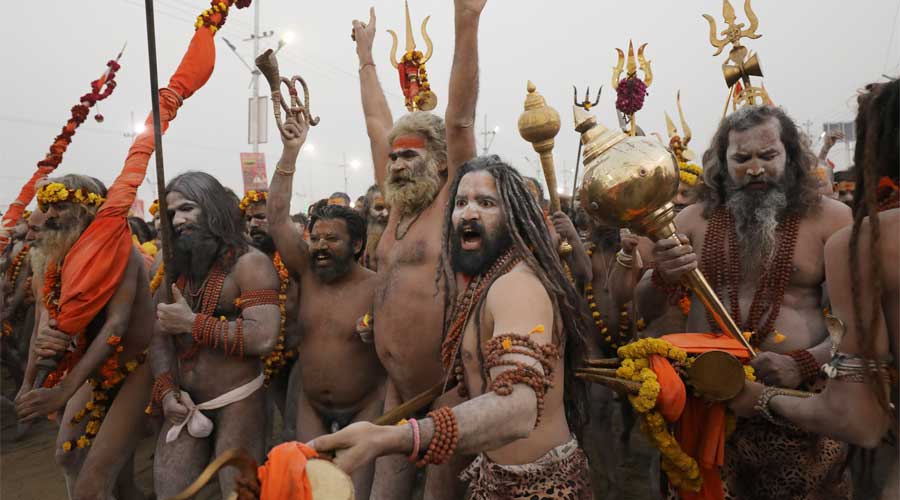Naga Sadhus are truly one of the most intriguing and important beings of Sanatan Dharma. With their distinct way of living and deep devotion, they embody ideals of renunciation, spiritual development, and self-discipline. When the Maha Kumbh Mela rolls around, their presence draws millions of devotees and curious onlookers from all over the globe. Let’s explore in more detail who the Naga Sadhus are, what their lifestyle looks like, and what part they play during the Kumbh Mela.
Table of Contents
Who Are Naga Sadhus?
Naga Sadhus are Hindu ascetics who completely devout their lives in spiritual practice to attain moksha which means liberation from the cycle of birth and death. The term “Naga” means “naked”. Naga sadhus most of the time wear minimal clothes or wear no clothes at all. They do so as a symbol of their detachment from material possessions. They cover their bodies in ash which they mostly collect from funeral pyres. They considered ash a sacred substance which signifies purity, humility, and the continuous cycle of life and death.
These sadhus give up all cravings a human has for this material world and they only focus their lives on meditation, yoga, and studying Hindu scriptures. While their way of life might seem strange to most, it’s deeply rooted in ancient traditions and spiritual convictions.
Significance of Naga Sadhus in Kumbh Mela

Kumbh Mela, held every 12 years, is one of the largest religious gatherings in the world. It takes place at four sacred locations—Prayagraj, Haridwar, Ujjain, and Nashik. Naga Saadhus are considered the spiritual guardians of this grand event. Their participation and rituals are believed to purify the sacred rivers, such as the Ganga, Yamuna, and Saraswati, and enhance the spiritual essence of the festival.
The most awaited moment of the Kumbh Mela is the “Shahi Snan” or Royal Bath, where Naga Saadhus are the first to take a dip in the holy river. This act is not only spiritually significant but also attracts thousands of spectators. It is believed that their sacred bath purifies the river and blesses the devotees who follow them.
To know about the next shahi snan or amrit snan in Maha Kumbh 2025 read our article here.
How Does One Become a Naga Sadhu?
Becoming a Naga Sadhu is not at all an easy process because it requires a lot of dedication and discipline. The first process is when the individual decides that he wants to renounce all worldly life to join a certain Akhada.
Thereafter under the care of a guru an aspirant undergoes intense training where he is taught all the principles related to renunciation and medidation. He is also taught philosophical teachings of Hindu scriptures like vedas, upvedas and puranas. An aspirant also needs to practice self-control and celibacy. He also needs to live detached from all worldly pleasures.
The initiation process involves several rituals where a funeral ceremony is organized and in that ceremony an aspirant symbolically dies to their old life and is reborn as a Naga Sadhu. They are formally recognized as Naga Sadhus only after years of intense training and dedication.
The Life and Practices of Naga Sadhus
Naga Saadhus led a very simple life. They live in caves, forests. They live in areas which are far away from the distractions of the modern world. Doing mediation, yoga and prayers is a part of their daily routine. They also focus on mastering their minds so that they can overcome physical and mental limitations.
The ash that these sadhus smear on their bodies is not just symbolic but it also serves practical purposes. It protects them from extreme weather conditions and insects. Their spiritual practices and discipline inspire countless devotees to pursue a path of self-improvement and faith.
Akhadas and Their Role

Naga Sadhus are part of organized groups called Akhadas. There are 13 main Akhadas in India, such as the Juna Akhada, Niranjani Akhada, and Mahanirvani Akhada. These Akhadas plays the role of maintaining rules, regualtions and traditions related to these Naga Sadhus.
During Kumbh Mela these akhadas organize the participation of their Naga Saadhus. They lead processions, perform rituals, and ensure the smooth conduct of events like the Shahi Snan.
Why Are Naga Sadhus Important?
Naga Sadhus are the custodians of Sanatan Dharma’s spiritual legacy. In earlier time they bear the responsibility of protecting the vedic cultures and therefore they were trained in to use various sorts of weapons. Their renunciation and dedication remind people of the deeper purpose of life and they inspire other people to focus on inner peace, self-realization, and devotion to God.
Their presence at Kumbh Mela not only elevates the spiritual atmosphere but also educates people about the values of discipline, humility, and detachment. For many devotees, a glimpse of a Naaga Sadhu or their blessings is considered highly auspicious.







